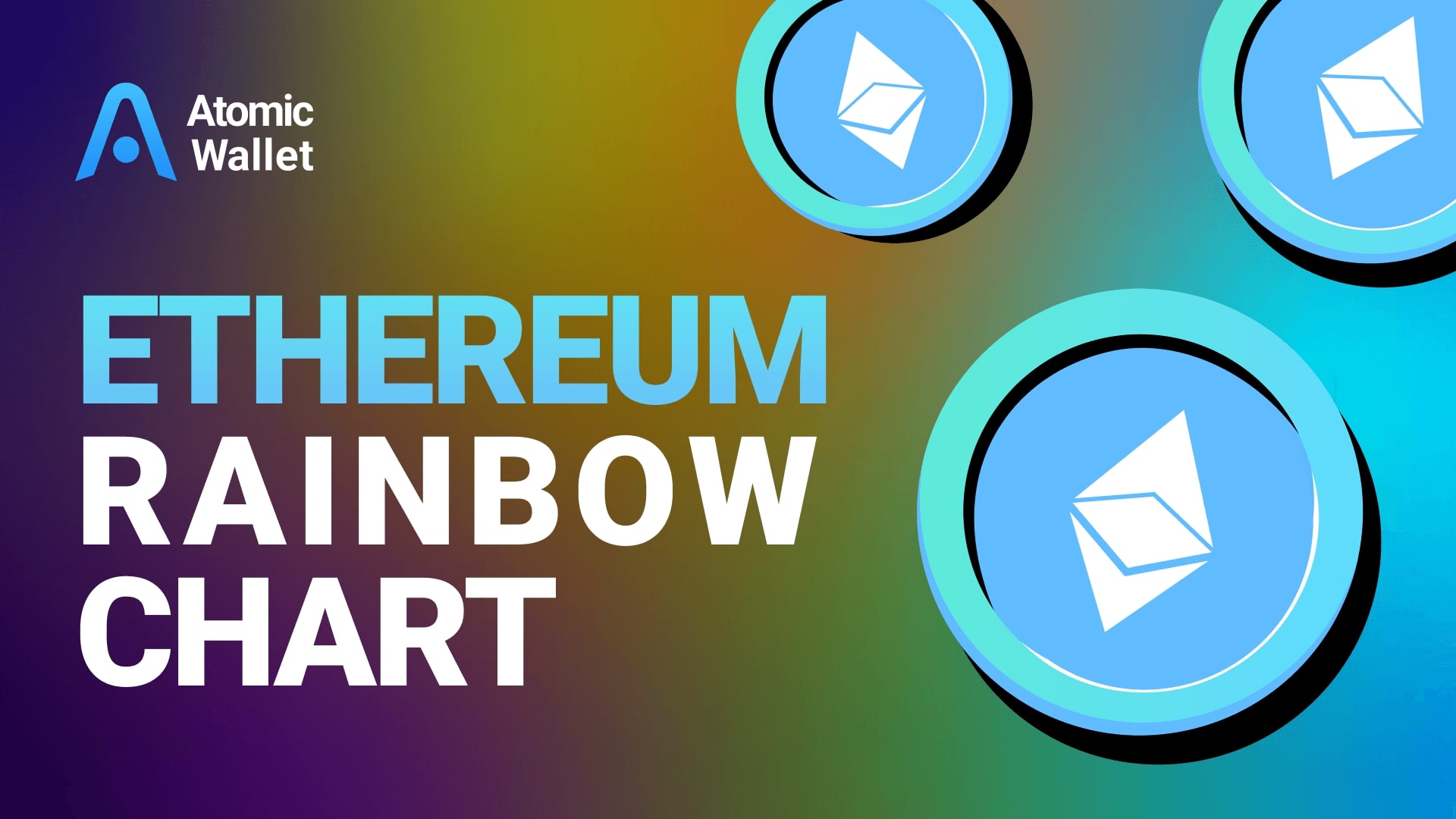Buy Crypto

Assets




When it comes to the world of cryptocurrency, understanding price charts is key to making informed decisions about your investments. These charts provide crucial insights into the price movements of different cryptocurrencies, allowing investors to identify patterns and trends. Before we delve into the specifics of the Ethereum Rainbow Chart, let's first establish a basic understanding of cryptocurrency charts.
Cryptocurrency charts are graphical representations of price movements over a specific period. They provide a visual way to track the historical and current prices of cryptocurrencies, such as Bitcoin, Ethereum, or Cardano. These charts can display information in various ways, depending on the specific parameters and time frames selected.
Typically, a cryptocurrency chart includes the following components:
Understanding these basic components is crucial for interpreting the price movements and market trends of a cryptocurrency.
There are several types of cryptocurrency charts, each providing different insights into market activity. The most common types are:
In the following sections, we will delve deeper into the structure and interpretation of the Ethereum Rainbow Chart, a unique tool that provides valuable insights into the long-term price trends of Ethereum. Understanding this chart can be extremely useful, especially if you're planning to buy Ethereum or manage an Ethereum wallet.
When dealing with cryptocurrencies, understanding their price movements is crucial for making informed investment decisions. Ethereum, one of the leading cryptocurrencies, is often analyzed using a tool known as the Ethereum Rainbow Chart. This chart is a graphical representation of Ethereum's price movements over time, offering insights into potential future trends.

The concept of Rainbow Charts originated in the Bitcoin community. The ETH Rainbow Chart was first developed in 2014 by a Reddit crypto account named “azop”. This user suggested using an algorithmic regression model to analyze historical Bitcoin prices. The model was later modified to a colored graph, now widely known as the Rainbow Chart. This charting method was later adapted for Ethereum, leading to the creation of the Ethereum Rainbow Chart.
The Ethereum Rainbow Chart is a logarithmic graph, visualizing the overall price of Ethereum across approximately ten years. Logarithmic scales can be complex to read for the average trader. To make the chart more accessible, the logarithmic growth curve is complemented with colored bands. These bands consist of 9 distinct colors, each representing a specific market condition.
Each color on the Ethereum rainbow chart represents a distinct market condition and signals the status of the asset at that time. For example, if the price of Ethereum is moving inside the dark red band, it signifies that the asset is strongly overbought and that the price will likely settle down soon. This could indicate a potential sell market order.
The Ethereum Rainbow Chart, thus, serves as a visual tool that simplifies the process of analyzing Ethereum’s price movements over the years. It provides a comprehensive view of Ethereum's historical price data, making it easier for investors to predict future trends and make informed decisions. For more in-depth information on Ethereum, you can refer to our detailed guide on how to buy Ethereum.
The Ethereum Rainbow Chart is a powerful tool for visualizing the price trends of Ethereum. This section will explore the significance of logarithmic scales in the chart and guide you through the process of reading the color bands.

The Ethereum Rainbow Chart is based on logarithmic price scales. Unlike linear scales, which increase uniformly, logarithmic scales increase exponentially. This allows for a better visualization of long-term price trends, particularly for cryptocurrencies like Ethereum, which have experienced substantial price fluctuations.
Logarithmic scales are especially important in the context of cryptocurrency markets, as they can help normalize dramatic price changes. For instance, a price movement from $1 to $10 is the same distance on a logarithmic scale as a movement from $10 to $100, even though the latter represents a much larger absolute change. This can help traders and investors understand the relative significance of price movements, rather than getting overwhelmed by the absolute numbers.
However, reading a logarithmic growth curve can be complicated for the average trader, hence the introduction of color bands to the Ethereum Rainbow Chart.
The Ethereum Rainbow Chart uses colored bands to simplify the analysis of market conditions. These bands consist of 9 different colors, each representing a distinct market condition. If the price of Ethereum is moving inside a particular band, it indicates the status of the asset at that time.
For instance, if the price is inside the dark red band, it suggests that the asset is strongly overbought, and the price is likely to settle down soon. This could be a prompt for traders to consider a sell market order. Conversely, if the price is in a green band, it may indicate that the asset is undervalued, suggesting a potential buying opportunity.
It's crucial to remember that while these color bands can provide valuable insights into current market conditions, they should not be used as the sole basis for investment decisions. The Ethereum Rainbow Chart shows various price movements using historical price data. Thus, it is used to understand the current price by referencing it to a given historical trend. It is not intended as investment advice or a tool to predict future prices due to its limitations.
Navigating the world of cryptocurrencies can be complex, but tools like the Ethereum Rainbow Chart can provide valuable insights for both new and experienced traders.

Understanding the historical price levels of Ethereum is crucial when examining the Ethereum Rainbow Chart. These levels highlight significant points of resistance or support that Ethereum has encountered in the past.
In the context of the Ethereum Rainbow Chart, resistance and support levels indicate the price points at which the upward or downward trend of Ethereum's price has historically halted or reversed. These levels provide insight into the potential future movements of Ethereum's price.
For example, a resistance level could indicate a price point at which Ethereum's price has struggled to rise above in the past. Similarly, a support level could suggest a price point at which Ethereum's price has typically not fallen below.
The Ethereum Rainbow Chart is a valuable tool for identifying possible buying or selling opportunities. Each color of the chart represents a distinct market condition and explains the status of the asset at that time. For instance, if the price of Ethereum is moving inside the dark red band, it indicates that the asset is strongly overbought, and the price may settle down soon, suggesting a possible selling opportunity.
The Rainbow Chart provides these insights by showing various price movements using historical price data. Thus, it enables investors to understand the current price by referencing it to a given historical trend. This can help investors anticipate potential future price movements and make strategic investment decisions accordingly.
Understanding the significance of historical price levels and how they relate to resistance and support levels is crucial for anyone looking to leverage the Ethereum Rainbow Chart. It's an excellent tool for those who are new to cryptocurrency investing, as well as seasoned investors seeking new insights into Ethereum's price movements.
Keep in mind that while the Ethereum Rainbow Chart is a powerful tool, it should be used in conjunction with other research and analysis methods. For a deeper understanding of Ethereum and its future prospects, check out our article on Ethereum vs Ethereum 2.0.

While both Ethereum and Bitcoin Rainbow Charts serve similar purposes, the ETH chart has less data history and its formula has been adjusted to match price development, whereas the BTC chart uses the exact formula. Both charts provide a vibrant visual representation of the value of Ethereum and Bitcoin over time, allowing investors to identify trends and potential market conditions.
Both Bitcoin and Ethereum Rainbow Charts showcase striking parallels and correlations in their price changes over time, implying that these two cryptocurrencies frequently trace similar patterns and trends. However, it is important to remember that correlation does not imply causation, and the relationship between Bitcoin and Ethereum prices can evolve over time.
The Ethereum rainbow chart, with its unique and vibrant color scheme, serves as a valuable tool for cryptocurrency enthusiasts. This section delves into the practical use of the chart, providing insights from historical trends and discussing the limitations and considerations when using this tool.
The Ethereum rainbow chart is a graphical representation of previous ETH price movements over the years, which some use to draw future predictions. This chart option casts this crypto’s price trend on a logarithmic graph that visualizes the overall ETH price over around ten years. Each color of the Ethereum rainbow chart represents a distinct market condition and explains the status of the asset at that time.
For example, if the price of Ethereum is moving inside the dark red band, it suggests the asset is strongly overbought, and the price may settle down in no time, indicating a sell market order. Thus, the chart allows traders to understand the current price by referencing it to a given historical trend.
However, it's essential to remember that the Ethereum rainbow chart, like any other market analysis tool, is not foolproof. For those looking to buy Ethereum, it's crucial to use the chart as one of many tools to make informed investment decisions.
While the Ethereum rainbow chart offers valuable insights, it's important to be aware of its limitations. The chart is based on historical price data, and as the old adage goes - past performance is not indicative of future results. Therefore, it should not be used as a standalone tool to predict future prices or as definitive investment advice.
Further, the logarithmic growth curve can be complicated to read for the average trader. Therefore, it was complemented with colored bands consisting of 9-colored layers that are easier to read and analyze. This makes the chart more accessible, but it's essential to fully understand what each color represents before making investment decisions based on the chart.
In conclusion, the Ethereum rainbow chart can be a useful tool for understanding historical price trends of Ethereum. However, investors should consider other factors such as market news, technological advancements, and their personal risk tolerance before making investment decisions. As with all investments, due diligence is key, and consulting with a financial advisor is always a good idea.

Sharding is a process of breaking down a blockchain into smaller segments that is aimed to improve the transaction costs and speed.